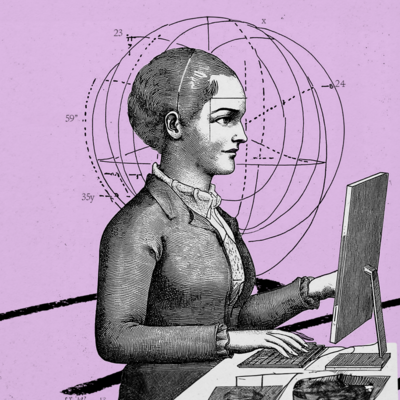
Was this newsletter forwarded to you? Sign up to get it in your inbox.
It’s the late 1800s and a brand new horse-drawn carriage just hit America’s dirt roads. Horses are still the most popular mode of transport, so this isn’t out of the ordinary—but the carriage is causing quite the stir. The horse is a bit…strange. It doesn’t whinny, neigh, stomp—or even move—its hooves.
This contraption was one of America’s earliest experiments with a car. Its creator, a blacksmith from New York, wanted people to feel comfortable in his strange mechanical contraption—so he stuffed all the nuts, bolts, and gears that make a car work into an artificial horse-shaped frame. The driver could even steer it with reins attached to the “horse’s mouth.”
A sketch of the design was published in an upstart magazine, The Horseless Age, and came not long after Thomas Edison was quoted as saying that “the horse is doomed” as a means of transport.
We know the rest—Edison was right, and modern car designs have evolved a long way from their equine-imitating ancestor. But the urge to couch early motor vehicles in forms that were familiar to people at the time is an example of a design principle known as skeuomorphism. And it persists to this day in cars: Tesla designs its vehicles with showy front grilles—typically needed to prevent engines from overheating—even though electric cars don't need them.
It’s also a big part of how we interact with AI systems. The way we think, talk, and use AI today is modeled on our understanding of humans. That’s natural, and even useful, in the initial stages of adopting a new technology—but you could say we’re living in the “horseless carriage” era of AI. What comes next, the enduring applications of AI, will look different. Let’s call them “AI-native.” These capabilities can only emerge when we stop trying to replicate human intelligence, and start exploring what makes AI unique.
New technology absorbs the shape and form of what came before it
Skeuomorphic thinking goes deeper than surface design; it extends to how we actually use new technology. The early internet, for example, was initially used to take existing behaviors online: reading the news, sending mail, shopping from catalogues. Internet-native use cases—ones that had no clear parallel in the pre-internet world, like crowd-sourced stores of knowledge and the rise of social media—emerged much later.
Like Web 1.0 in the 20th century, our mental models of what we can use AI for are currently shaded by skeuomorphism. We’re predisposed to map AI’s capabilities to human roles because generative AI comes closer to mimicking human behavior than any technology we’ve created yet: It can understand natural language, adapt its communication style to match your level of expertise in a subject, and make do with bad instructions, even though it thrives with context—much like a human being.
We assume that AI will do what humans do. That’s why the impact of AI is often spoken of in terms of how much of the labor force will be automated, its intelligence is measured in terms of human IQ, and its uses are modeled around human roles like the personal assistant, copywriter, and developer. While many of these use cases are admittedly helpful, this way of thinking is limiting. If we assume that AI is like us, we risk failing to explore what AI is uniquely suited to do.
The Only Subscription
You Need to
Stay at the
Edge of AI
The essential toolkit for those shaping the future
"This might be the best value you
can get from an AI subscription."
- Jay S.
Join 100,000+ leaders, builders, and innovators

Email address
Already have an account? Sign in
What is included in a subscription?
Daily insights from AI pioneers + early access to powerful AI tools









Comments
Don't have an account? Sign up!
Great insights and human understanding, Rhea. I look forward to your essay on What AI Can Do That Humans Never Could. Never is such a big word and mental challenge for humans who have a spirit that says they Can Do more than they imagine. That will be a great article, when you write it.